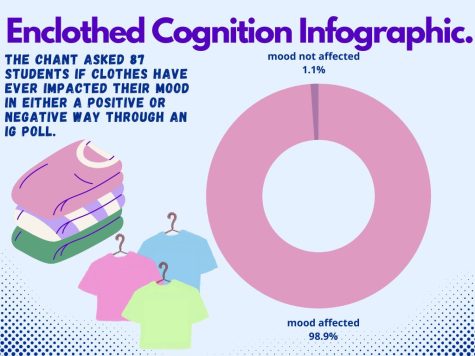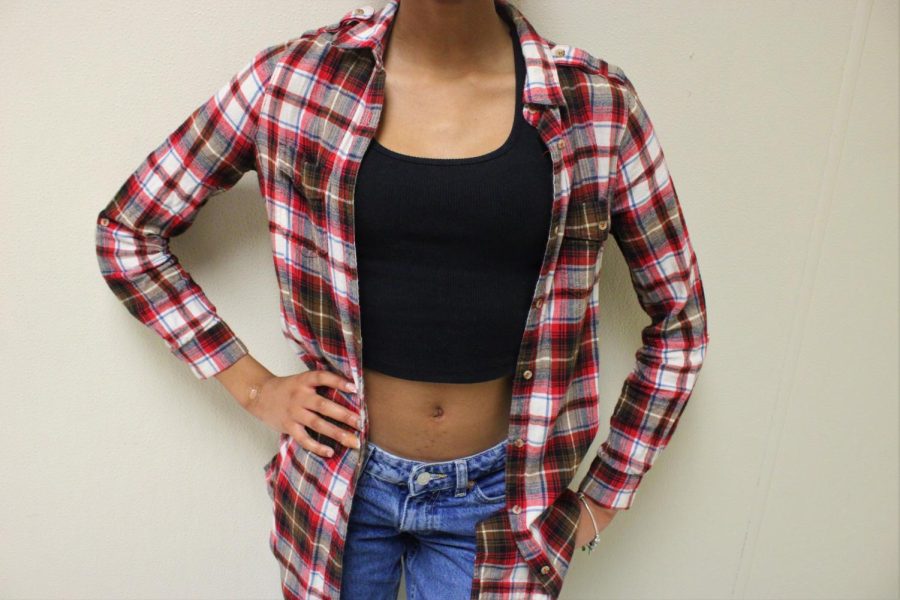The feeling in the fabric
As fashion trends rise, people recognize the effect of styles, patterns, colors and cuts on their self-perception. The phenomenon of enclothed cognition suggests that clothing items hold power over psychological and physical processes. This sensation received additional attention as researchers, doctors and professors refer back to the subject to justify bodily operations and emotional changes.
November 1, 2022
Several cultures and religions hold their respective standards and expectations for attire. As society progresses through changing times, people recognize the meaning behind their clothing and the link between their emotions and their outfits.
Moreover, a person’s wardrobe affects various aspects including, but not limited to self-perception, mental state and emotion. Multiple studies prove wearing clothes that symbolize intelligence such as scrubs, lab coats and judges’ robes help people appear and feel confident. People dressed in business attire display additional confidence as compared to those dressed casually. This psychological phenomenon comes in the form of clothing styles and colors and affects an individual’s performance, and the way people perceive others.
“Sometimes [I take the ways other people view the way I dress into consideration.] Usually, I will think about how others think of me if I am already self-conscious or upset about myself that day, but usually, I will try to only think about how I see myself. I only buy clothes for myself and to make myself happy because I will look good,” junior Brenna Schmook said.
Enclothed cognition refers to the power clothing holds over a person’s psychological processes. The phenomenon includes various factors ranging from colors, styles and patterns that affect personal identity and mood.

This concept acts as the justification for the conventional image behind outfits; typically, people associate the stereotype of wearing baggy clothes and casual outfits such as sweatpants and sweatshirts with mental illnesses including depression and other mood disorders. A study performed by developmental psychology professor Karen Pine revealed 57% of the 100 women surveyed confessed to wearing a baggy shirt during feelings of depression.
“Comfortability is a huge factor [in the way clothing affects your mood] If you are too comfy, then it is easy to feel lazy and tired. [Although,] when you are wearing something super uncomfortable, boom, [you feel] anxious,” senior Emma Kleine said.
Additionally, wearing passive colors such as blue and purple can calm down the body by decreasing blood flow and heart rate. With the colors maintaining associations of nature and luxury, the hues commonly encourage productivity and increase cognitive performance. Green and gray act similar by appearing as passive-neutral colors which induce rest and balance.
On the contrary, people view those dressed in active colors such as red as attention-grabbing or eye-catching. The head-turning red hue boosts testosterone, ultimately improving performance and increasing the individual’s sense of dominance. As people frequently associate red with love and hate, the color can cause intense emotions for both the one strutting around in the world and those that choose to view.
Several variations of clothing impact cognition due to the symbolic meaning and physical effect of the color, style or pattern. By learning about the mental and physical reactions to clothing, people can align their style with their desired emotional and social perception.







